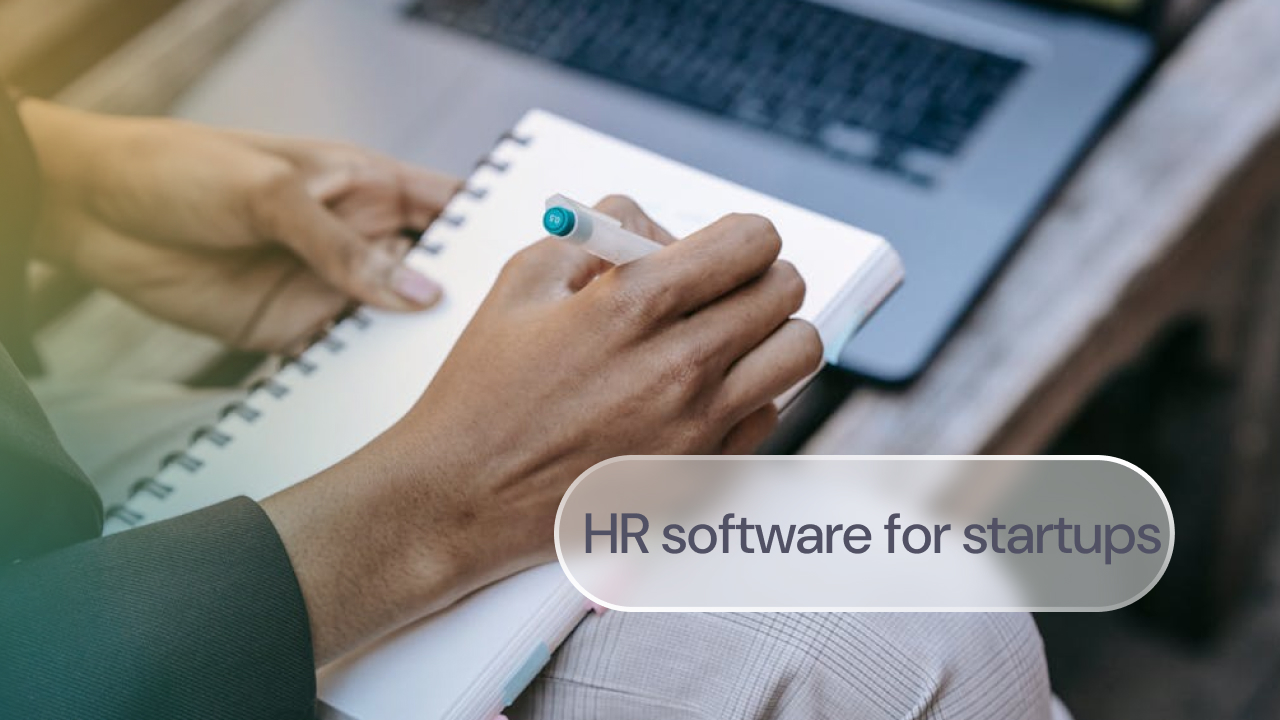Anything that boosts employee engagement, streamlines operations, and enhances organizational cohesiveness will positively impact a company. And those outcomes are exactly what employee self-service portals and HR digital transformation software aim to achieve. The software allows universal access to essential company information and bridges the gap between employees and HR, putting everyone within the organization on the same page.
In this blog, we’ll run through everything you need to know about employee self-service portals. You’ll find out what it is, and how it can benefit HR, employees, and the company as a whole.
TABLE OF CONTENTS
- What is ESS?
- Benefits of Employee Self-Service
- ESS features
- Using employee self-service software
- Employee self-service software 🚀
What is ESS?
Employee Self Service, or ESS, is a component included in many Human Resource Information Systems (HRIS). Self-service employee portal software allows employees to access a wide range of HR-related information and services. This not only minimizes confusion but also puts the control of some HR tasks, such as managing time-off, in the employees’ hands.
Normally, ESS portals allow employees the freedom to access and/or manage to the following:
- Employee personal data, such as banking and contact information
- Time off requests and and managing scheduling changes
- Payroll and benefits information
- Employees can use an ESS portal/HRIS to communicate directly with HR
It should be noted, however, that these features vary from software to software. Additionally, approval settings for employees to make updates may change depending on the platform.
Benefits of Employee Self-Service
- The “big picture” advantage of an employee portal is that it unifies the team and creates a cohesive organization. This allows everyone, HR departments and employees alike, to spend less time performing unnecessary administrative tasks and more time on things that matter.
- Employee portal software will save time for employees, who will spend less time contacting HR for information. But the staff benefits of employee software reach far beyond this increased efficiency.
- An employee self-service portal will also boost employee autonomy and empowerment. Employees are people, and people don’t want others to walk them through everything; they want to do things themselves.
- When they need to look up a policy, they can go straight to the source. When they want to schedule time-off, they can make a request with just a few clicks. In this sense, incorporating portal software isn’t just a way to streamline HR activities: it’s also a way to boost employee morale.
- From an HR point of view, employee self-service software is a bonafide time-saving juggernaut. Many hours can be lost responding to low-value queries via telephone or email. An ESS portal helps reduce or even eliminate this problem. Employees can access essential information related to your company’s vacation, maternity, and benefits policies, among others, in the portal.
Low-value queries from employees are not only an ineffective way for HR teams to spend their time. They can also cause frustrations within the workforce. Employees don’t want to ask all these redundant questions and wait for a response from the overworked HR team. These kinds of interactions can potentially lead to low office morale, which will ultimately require intervention from the HR team.
ESS Features
Employee self-service software has a variety of beneficial features. Some of the most common features are:
- 24/7 access: With cloud-based platforms, employees can access their information from anywhere and always have the most up-to-date information. This means more autonomy to check their PTO balances, team announcements, and yearly schedules.
- Documents: Employees can reference their contracts or update their profiles at any moment. In addition, they can store and download their paystubs to be financially aware of their earnings.
- Payroll & Benefits: Employees can view all their company benefits and learn about the enrollment process. In addition, ESS software also includes employee self service payroll features such as updating their banking information or viewing paystubs.
Let’s dive deeper into common employee self-service features by looking at more specific examples. Here we’ll be able to see how self service portals aid HR and business management.
Employee self-service portals and onboarding
Onboarding can be a time-consuming and often complicated process for both the new employee and the HR department. While the HR team might chalk it up to just another day at the office, the candidate may see things differently. A chaotic and disorganized onboarding process reflects poorly on an organization, especially since this will likely be the recruit’s first experience of the inner workings of the company.
An employee self-service portal helps to get the new recruit up and running at your company with a minimum amount of fuss. Once they login into the portal, the new worker can sign his or her contract digitally and access the company’s onboarding and other documents. More broadly, the portal functions as a warm welcome to the company and allow for smooth integration into the team.
Employee self-service and document management
HR departments need to produce a lot of documentation for their employees. Historically, this documentation was paper-based, kept in a corner file cabinet under lock and key that, surprise surprise, did not prevent pages from going missing. It’s a wonder how we achieved anything in the paper age! Then the switch to digital made securing and accessing this information more straightforward. However, digital copies alone won’t solve all problems.
Without a centralized point of access for documents related to time-off, payslips, or benefits as well as the various other company policies that all organizations must produce, confusion can reign. This leads to frustration and wasted time on the employees’ side and an overload of (justified) calls and emails on the HR departments’ side. Things can become even more problematic when there are multiple versions of the same document.
Keeping track of which documents to include in employee files is already tough enough. Organizing and storing those documents shouldn’t cause additional problems. Employee record management software, or an electronic document management system (EDMS) allows HR to share documents with all employees within one portal. Staff can access this hub regardless of whether they’re working onsite or elsewhere. They’ll always have the information they need, just a few clicks away.
Employee self-service portals and HR compliance
Tracking employee working hours is no one’s idea of a good time. Many companies choose to invest in time tracking software to boost efficiency, ensure accuracy and compliance, and improve internal communication practices. With an online employee clock in system, employees can log their own hours and submit them for managerial approval.
Managing time-off requests can also be a time-consuming task for HR departments. Time off and employee portal software puts employees in control of their absence requests, allowing them to submit their time-off requests electronically, which HR can then approve or deny, either manually or automatically. Employees can also see their remaining time off and review the company’s vacation policies, which can be updated by HR as and when needed.
ESS and employee development
Portal software doesn’t only positively impact the organization as a whole. It also helps individual employees get better at what they do. With employee portal software that features performance management, managers can review employee performance with a 360-degree lens, with feedback from supervisors, colleagues, and direct reports. Performance appraisals can celebrate work well done and help employees find areas for positive growth. Further, they set and track goals and create development activities to help employees succeed.
All this supports employee engagement and retention. It also helps the HR team, by providing ready access to employees’ entire performance history in the employee database. Even more importantly, HR can leverage performance data, in addition to attendance, time off data, and more in creating HR reports that will provide insight into the company’s inner workings. Employees are constantly producing data. Employee portal software makes it easy to collect and analyze.
Employee self-service portals and engagement
Workplace morale shines when all employees feel integrated within the organization’s company culture. Employee portal software provides HR teams with the ideal tool to reinforce the company’s ideals and progress. Employees can share success stories, company events, and announcements. This is important for all workers but is especially beneficial for remote workers; polls routinely highlight that while non-office employees experience high levels of job satisfaction, they’re more likely to feel disconnected from the company and, in particular, their colleagues.
The increased levels of employee engagement that accompany employee portals can also help foster a positive workplace culture. The culture of an organization isn’t a static ideal to which employees automatically submit. It is fed by how employees feel when they’re at work. An employee portal that empowers workers can create a positive feedback loop that creates a more positive workplace culture.
Using employee self-service software
Streamlining operations, cutting costs, boosting employee engagement, creating a cohesive, well-oiled team, and much, much more. We won’t say that an employee self-service portal can do it all, but we sure will say that it can do a lot.
There are many good reasons why so many HR teams are turning to employee self-service portals, people management software, Human Capital Management Software, HRMS Software, and HRIS Software. It’s not just the reduced emails and phone calls asking the same question over and over. Convincing management to work with HR solutions can completely reshape internal communication and directly impact the employee experience. In a nutshell, Employee portal software helps you to take care of employees taking care of themselves.







